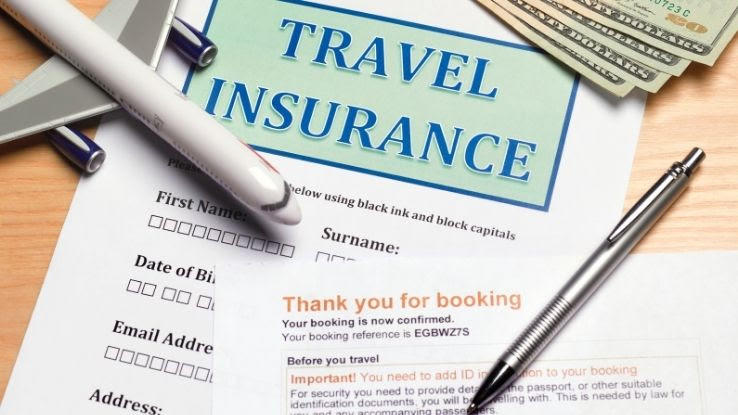Pacific Prime Fundamentals Explained
Table of ContentsThe Ultimate Guide To Pacific PrimeExcitement About Pacific PrimePacific Prime Fundamentals ExplainedThe Pacific Prime Diaries
In most states, the insurance provider is needed to send you a duplicate of the adjustments to your plan. It is essential that you check out Recommendations or Riders so you comprehend exactly how your policy has actually transformed and if the plan is still ample to meet your needs. To get a copy of your insurance coverage plan, please contact your insurance policy representative or company.
The Institute of Medication (IOM) Board on the Effects of Uninsurance launches an extensive exam of evidence that addresses the importance of health and wellness insurance policy coverage with the magazine of this record. Insurance coverage Issues is the first in a series of six reports that will be issued over the following 2 years recording the truth and repercussions of having an approximated 40 million people in the United States without medical insurance coverage.

All About Pacific Prime
The objective of this collection of researches is to refocus plan focus on a historical problem. Adhering to the longest economic development in American history, in 1999, an estimated one out of every six Americans32 million adults under the age of 65 and greater than 10 million childrenremains without insurance (Mills, 2000).

Ten percent of the populace accounts for 70 percent of healthcare expenditures, a correlation that has continued to be consistent over the past 3 years (Berk and Monheit, 2001) - international health insurance. Thus wellness insurance coverage proceeds to serve the function of spreading risk also as it progressively funds regular care. From the point of view of healthcare companies, insurance carried by their individuals helps protect an earnings stream, and communities gain from financially practical and stable wellness care professionals and establishments
Federal government offers medical insurance to populaces whom the private market may not serve effectively, such as impaired and seniors, and populaces whose accessibility straight from the source to healthcare is socially valued, such as youngsters and expecting women. The supreme ends of health and wellness insurance coverage for the private and communities, consisting of workplace communities of staff members and companies, are boosted wellness outcomes and high quality of life.
The 9-Minute Rule for Pacific Prime
Staff members rate health insurance initially by much in value among all the advantages used in the office (Salisbury, 2001). Although there have actually been large investments of personal and public funds to provide wellness insurance coverage, lots of people still have no protection. Despite comprehensive coverage of survey findings and health and wellness care research study results, the basic public stays overwhelmed and mistaken regarding Americans without medical insurance and the ramifications of lacking coverage.

Without question, the intricacy of American health and wellness care financing systems and the riches of resources of information include in the public's confusion and hesitation concerning medical insurance stats and their interpretation. This record and those that will adhere to aim to distill and present in conveniently understandable terms the substantial research that births on inquiries of medical insurance protection and its relevance.
Fifty-seven percent of Americans polled in 1999 thought that those without medical insurance are "able to get the care they require from doctors and hospitals" (Blendon et al., 1999, p. 207). In 1993, when national attention was focused on the troubles of the without insurance and on pending healthcare legislation, simply 43 percent of those questioned held this idea (Blendon et al., 1999).

They additionally receive less preventative solutions and are less likely to have regular look after persistent conditions such as hypertension and diabetic issues. Persistent conditions can result in costly and disabling problems if they are not well handled (Lurie et al., 1984; Lurie et al., 1986; Ayanian et al., 2000). One nationwide survey asked even more than 3,400 grownups concerning 15 very significant or somber conditions.
An Unbiased View of Pacific Prime
Additional proof is provided later in this phase in the discussion of insurance policy and accessibility to health and wellness treatment. https://iridescent-horse-hspdzg.mystrikingly.com/blog/welcome-to-pacific-prime. People without medical insurance are young and healthy and choose to do without insurance coverage. Virtually fifty percent (43 percent) of those checked in 2000 believed that people without medical insurance are most likely to have illness than individuals with insurance coverage
Citizens and policy manufacturers in emphasis group conversations identify those without insurance policy as young people that have the opportunity to be covered and feel they do not require it (Doorperson Novelli, 2001). Contrasted to those with a minimum of some exclusive insurance coverage, the uninsured are much less likely to report being in excellent or excellent wellness (Firm for Health Care Study and Quality, 2001).
RESOURCE: Center for Price and Financing Studies, Company for Healthcare Research Study and Quality, based upon MEPS data. Young person in between 19 and 34 are far extra likely to do not have health insurance policy than any kind of various other age group. This is primarily due to the fact that they are less typically qualified for employment-based insurance as a result of the nature of their work or their brief tenure in it.
The perception that individuals without insurance policy have better-than-average wellness adheres to from puzzling the reasonably young age profile of the without insurance with the far better health, usually, of younger individuals. This covers the web link in between health and wellness condition and medical insurance. For those without access to office medical insurance, poor health is a prospective obstacle to acquiring nongroup coverage due to the fact that such coverage may be extremely priced, exclude preexisting problems, or be simply unavailable.